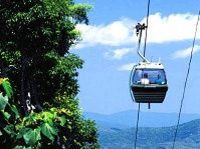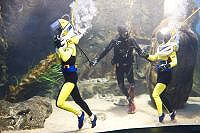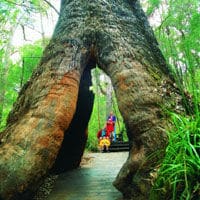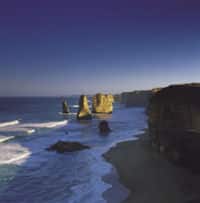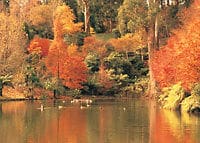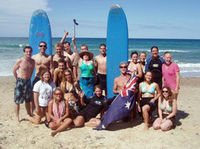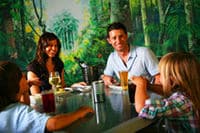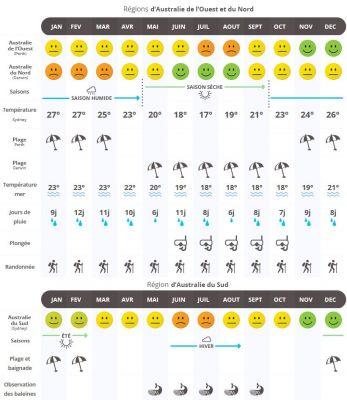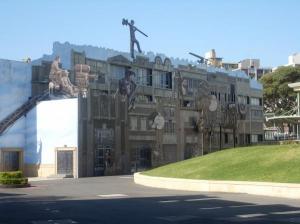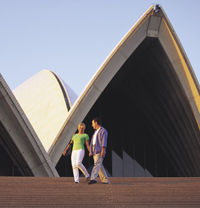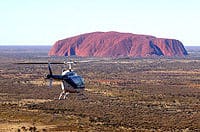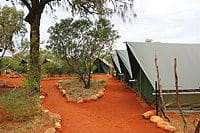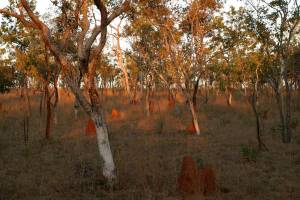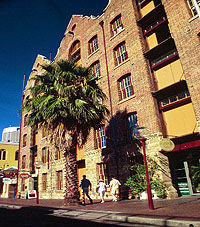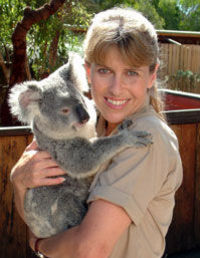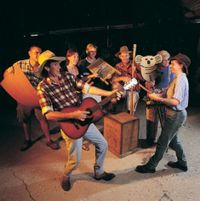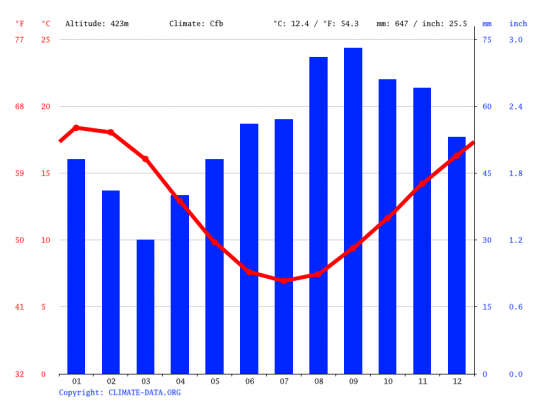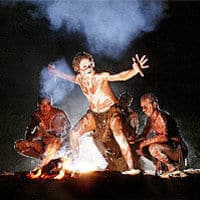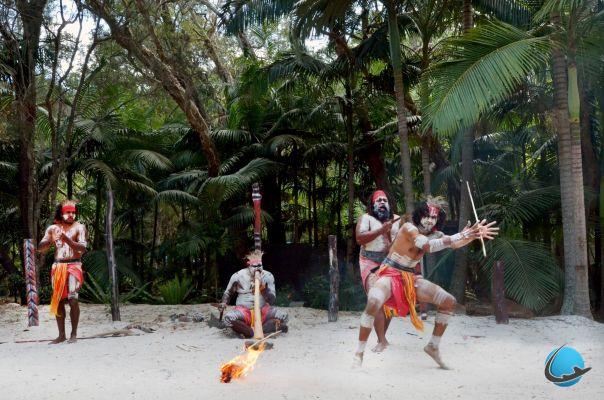
Indeed, the stories were told from one Aboriginal generation to another. Moreover, Australia has managed to maintain reserves in which these peoples evolve with ancestral dialects and customs. Originally from present-day Indonesia, they were colonized by the British from the end of the 18th century.. Nonetheless, the original Australian culture has continued to this day! Today, most of the population is located more towards the coasts. Australia is also the largest island in the world with its some 36 km² of coastline. The interior of the island, on the other hand, is desert or semi-desert in nature, and is equivalent to about 000% of the island. Discover all this before your stay!
Geography of Australia: relatively flat relief
Australia is made up mainly of plateaus in the west, and plains in the center. The only mountain range is located in the east, near the coasts: it is the Australian Cordillera.
The Outback and the Bush
Due to the vastness of the deserts that cover its surface, Australia is a country with a dry climate, making the soil not very suitable for cultivation. This is what Australians call the Outback. Only the south of the country enjoys a temperate climate, whether subtropical (south-east) or Mediterranean (south-west). In the north, there are subtropical forests. There are even more deserted areas in Australia: the Bush.
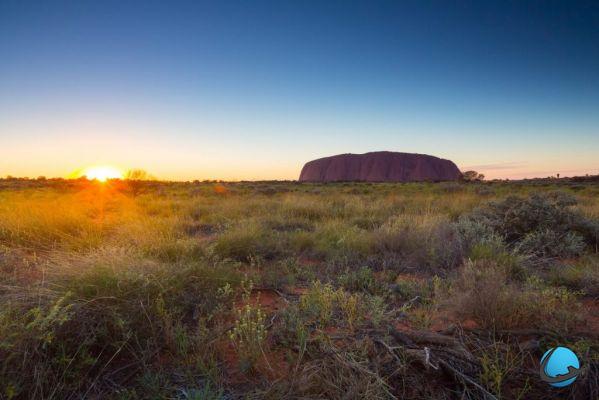 L’Outback australien
L’Outback australien
In Australia's imagination, the Bush holds an important place. This is the set of sparsely populated areas such as forests, woods and Mediterranean scrub, but it also refers to agricultural areas and small human settlements in very sparsely populated regions.
READ ALSO :
5 100% nature spots to discover in Australia!
A poorly diversified economy
The Australian Outback is relatively sparsely populated, but it is not completely deserted, however. In particular, live there kangaroos and dingoes, lizards and snakes. The Outback gives rise to exploitation of its subsoil, which is very rich in iron, aluminum, gold or nickel. Coastal regions, for their part, are mainly turned to tourism, with for example the Great Barrier Reef or Sydney.
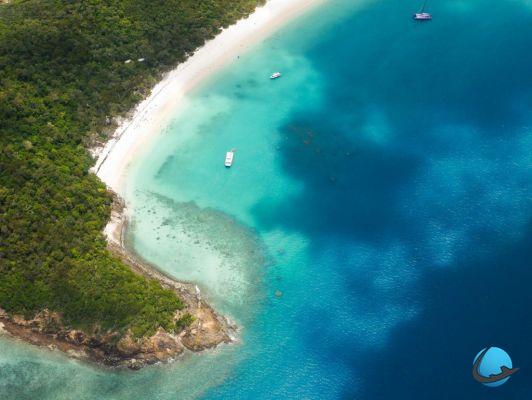 The great coral barrier
The great coral barrier
A federal country
Australia is divided into large federal states: South Australia, Western Australia, New South Wales, Queensland, Tasmania and Victoria. The two main territories are the Northern Territory and the Australian Capital Territory.
History of Australia: British colonization
The aborigines have inhabited Australia since prehistoric times. They are said to originate from Indonesia and in particular from Timor. Aboriginal people shaped Australian culture, but also mastered ingenious agricultural techniques very early on in this arid country. Their story was turned upside down with the arrival of the first settlers ...
When Australia is talked about: immigration
Australia was talked about during the 17th century thanks, in particular, to the navigator Willem Janszoon who landed on the western part of the island. It is especially the Englishman James Cook who is considered as the discoverer of Australian lands by taking possession of New Wales, that is to say of eastern Australia, where Sydney is located. He was the first to map the island, and it is because of his British nationality that Australia became a dominion of the English Crown, serving mainly as a penal establishment until 1868. This English domination is done gradually, from east to west.
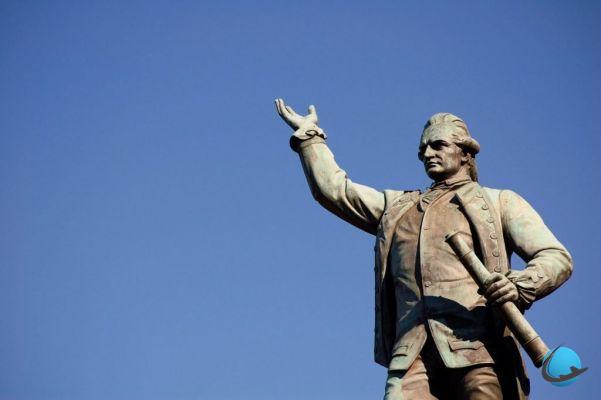 The statue of James Cook
The statue of James Cook
Les Historic wars
The arrival of British settlers led to the displacement of the local populations who inhabited the island. Aborigines are constantly hunted, very often change places and ways of life, by virtue of the fact that, according to the British, these lands did not belong to anyone. What's more, they suffer from diseases that were hitherto unknown to them. The cohabitation did not go smoothly: many bloody clashes took place and the aboriginal children were torn from their families to be Europeanized. All this lasted until 1967!
1901: birth of a federal state
The beginning of the 20th century is marked by the regrouping of different states. In 1901, the United Kingdom ratifies the Constitution of the Australian Federal State. Melbourne, then Canberra, are successively designated as the capitals of this new state. Like the sixteen other Commonwealth countries, Australia is independent. But it is symbolically headed by a Governor General, responsible for representing the reigning monarch in England.
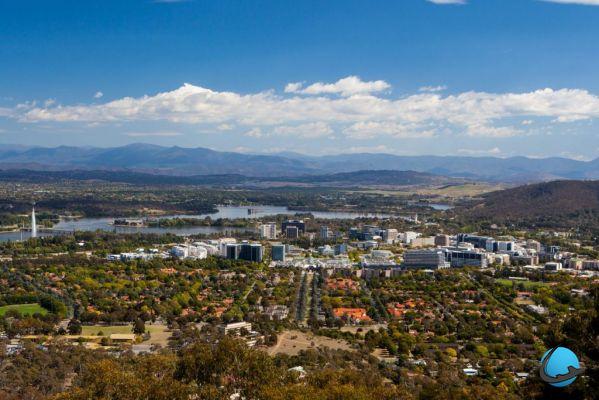 Canberra view
Canberra view
Australian Culture: Aboriginal Art and Beliefs
Whether before colonization or after, art is an integral part of the life of the aborigines. These people are at the origin of many objects which today give pride of place to Australian culture: the boomerang, the didgeridoo or even the dotted paint on the bark.
The Dreamtime
Based on the dream (the Universe was created in a dream world, the Tjukurrpa, with mythical creatures like the rainbow serpent), Aboriginal beliefs require honoring different spirits, and in particular that of the dead. Their culture puts them in close contact with nature. Long nomadic or semi-nomadic, they know the Outback perfectly. But above all, nature, constitutive of Dreamtime, encourages them to think that all life physically emerging from the earth is sacred.
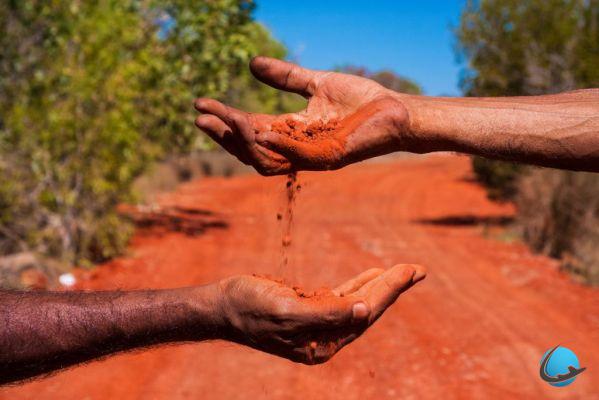 Respect for the land among the aborigines
Respect for the land among the aborigines
The Homeland
Long hunted by the whites, the aborigines were able to reclaim their land from 1976. These lands, located mainly in the northern part of the country, are very important in their culture, because it is in these places that the spirits of their ancestors are locked up.
The different forms of expression of Aboriginal art
Aboriginal culture is transmitted primarily through art, whether prehistoric paintings or more recent paintings. These paintings are often ephemeral, painted on the body, on bark, canvas, or even on the ground. They are the last in the world to still make cave paintings, which clearly shows the importance of the transmission of traditions for these peoples. It is especially the Dreamtime that they seek to represent as a motif. They use a lot of colors produced with what nature brings to them. Thus, the red comes from the ocher sand of the desert, the white from limestone and lime, the yellow from clay, ocher or yellow flowers. Finally, black is obtained from charcoal or burnt herbs.
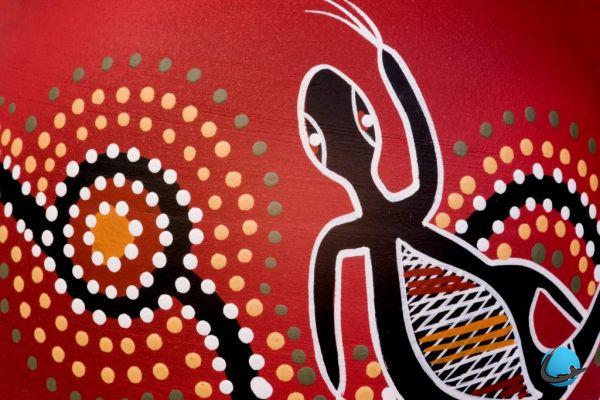 Aboriginal painting
Aboriginal painting
The aborigines also produce many wood carvings. Wood is indeed the material most used by these peoples, due to its abundance in the Australian bush. They represent either heads or figures on the same level. The best known are the Tiwi totems. Cultural heritage is also reflected in songs and dances. There are several names to designate them, because the dialects vary from one Aboriginal group to another, due to their fragmentation across the Australian continent. Finally, the music is not forgotten. The aboriginal instrument par excellence is the Didgeridoo, a branch of eucalyptus hollowed out by termites in which we continuously blow to obtain sounds. The didgeridoo can measure up to two meters!
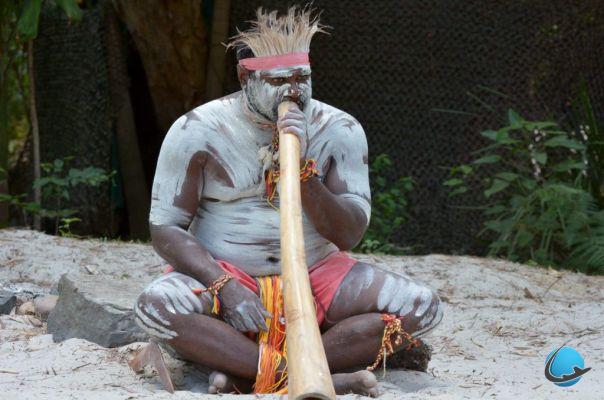 The didgeridoo, of aboriginal origin
The didgeridoo, of aboriginal origin
A cult object: the boomerang
The boomerang is an Aboriginal invention. Legend says that when the world was created, the sky was low, forcing people to crawl. One of them sent a stick to push back the sky, and the stick comes back to him. The story appealed to the British who exported it to Europe and allowed this object to become popular all over the world. Today, the boomerang is an integral part of australian culture!
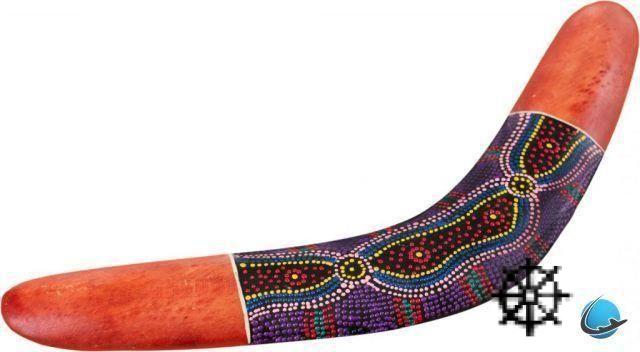 Want to test the boomerang?
Want to test the boomerang?
Discover Australia past and present!
Now that you know more about Australian culture, history and the country's location ... all you have to do is browse it during your stay. Discover natural sites not to be missed or the most beautiful beaches in the country!




